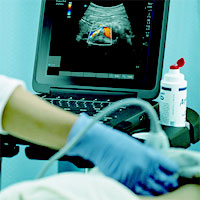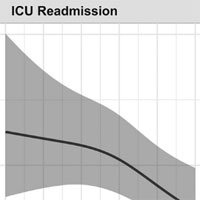Tag: readmission

Top 10 Perioperative Applications of Point-of-Care Ultrasound for Anesthesiologists
Anesthesiologists have been leaders in the use of point-of-care (POC) ultrasound for intraoperative transesophageal echocardiography (TEE), and to guide vascular access and regional anesthesia procedures. Recently, anesthesiologists... read more

Effect of Occupancy on Critically Ill Admissions
Effect of Emergency Department and ICU Occupancy on Admission Decisions and Outcomes for Critically Ill Patients. The volume of ICU admissions from the ED has increased around 50% from 2001-2009. Hospitals struggle with this... read more

Long-Term Mortality and Hospital Resource Use in ICU Patients With Alcohol-Related Liver Disease
ICU patients with alcohol-related liver disease have higher 5-year mortality and emergency readmission rates than ICU patients with other severe comorbidities and matched general ICU patients. These data can contribute to... read more

Did This Health Care Policy Do Harm?
A well-intentioned program created by the Affordable Care Act may have led to patient deaths. No patient leaves the hospital hoping to return soon. But a decade ago, one in five Medicare patients who were hospitalized for... read more

Association of Antibiotic Treatment with Outcomes in Patients Hospitalized for an Asthma Exacerbation Treated with Systemic Corticosteroids
Antibiotic therapy may be associated with a longer hospital length of stay, higher hospital cost, and similar risk of treatment failure. These results highlight the need to reduce inappropriate antibiotic prescribing among... read more

Assessment of the Safety of Discharging Select Patients Directly Home From the ICU
The discharge of select adult patients directly home from the ICU is common, and it is not associated with increased health care utilization or increased mortality. Among the 6732 patients included in the study, 2826 (42%)... read more

Caring for Critically Ill Patients with the ABCDEF Bundle
ABCDEF bundle performance showed significant and clinically meaningful improvements in outcomes including survival, mechanical ventilation use, coma, delirium, restraint-free care, ICU readmissions, and post-ICU discharge... read more

Direct Discharge From ICU OK for Some Patients
Discharging patients home directly from the intensive care unit (ICU) is associated with outcomes similar to those seen in patients discharged after a follow-up stay on a hospital ward, the authors of a large, population-based... read more

Unplanned Early Hospital Readmission Among Critical Care Survivors
Although some readmissions are medically unavoidable, for many ICU survivors complex health and psychosocial issues contribute concurrently to early rehospitalisation. Care pathways that anticipate and institute anticipatory... read more

Out-of-hours Discharge from ICU, In-hospital Mortality and ICU Readmission Rates
Out-of-hours discharge from an ICU is strongly associated with both in-hospital death and ICU readmission. These effects persisted across all definitions of “out of hours” and across healthcare systems in different geographical... read more

Indicators of ICU Capacity Strain
We identified and characterized 16 indicators of strained ICU capacity across the spectrum of healthcare quality domains. Future work should aim to evaluate their implementation into practice and assess their value for evaluating... read more
When Should Nutritional Support Be Implemented in a Hospitalized Patient?
At the time of admission to the hospital, malnutrition is already present in over 20% of patients. Hospitalized patients are particularly susceptible to developing malnutrition because of increased catabolic states in acute... read more

Temporal Trends in Incidence, Sepsis-Related Mortality, and Hospital-Based Acute Care After Sepsis
Owing to increasing incidence and declining mortality, the number of sepsis survivors at risk for hospital readmission rose significantly between 2010 and 2015. The 30-day hospital readmission rates for sepsis declined modestly... read more

The Utility of ICU Readmission as a Quality Indicator and the Effect of Selection
Intensive care readmission rates are used to signal quality, yet it is unclear whether they represent poor quality in the transition of care from the ICU to the ward, patient factors, or differences in survival of the initial... read more




